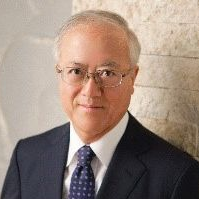Multi-Color Laser Emission for the Generation of Ultrashort Optical Pulse
A special issue of Applied Sciences (ISSN 2076-3417). This special issue belongs to the section "Optics and Lasers".
Deadline for manuscript submissions: closed (31 March 2016) | Viewed by 81988
Special Issue Editor
Interests: analytical chemistry; analytical instrumentation; analytical science; trace analysis; lasers; non-linear optics; spectrometry
Special Issues, Collections and Topics in MDPI journals
Special Issue Information
Dear Colleagues,
The pulse width of an electromagnetic wave is determined by the frequency band width of the wave used. Therefore, one femtosecond is the ultimate in pulse width for an “optical” wave. For this reason, several methods have been proposed for the generation of an ultrashort optical pulse. For example, resonance/non-resonance four-wave mixing would be one of the candidates for generating multi-color laser emission in an extremely wide spectral region, thus breaking the 1-fs barrier.
To date, numerous emission lines have been generated from the deep-ultraviolet to the near-infrared region (<45,000 cm−1). Such generations use a variety of techniques, such as four-wave Raman mixing in molecular hydrogen. This type of technique is promising for the generation of 1-fs optical pulses via phase locking and the Fourier synthesis of the emission lines. For verification, it would be necessary to develop a new method for measuring the pulse width, since the spectral band width approaches or is beyond one octave.
Ultrashort optical pulses can be utilized in a variety of applications in science and technology. For example, an ultrashort optical pulse can be used in the studies of ultrafast phenomena. More practically, a laser pulse shorter than 100 fs is reported to be useful in mass spectrometry for observing a molecular ion of triacetone triperoxide, an explosive used in terrorist attacks. A train of ultrashort optical pulses in the terahertz region, which has been generated in the optical cavity to enhance the nonlinear optical effect, would be employed as a clock pulse in optical computation/communication in future advanced industries. Therefore, it would be important to investigate a new frontier in the generation of multi-color laser emission for Fourier synthesis to generate ultrashort optical pulses and to publish a new issue of invited papers to clarify new trends in the state-of-the-art.
Prof. Dr. Totaro Imasaka
Guest Editor
Manuscript Submission Information
Manuscripts should be submitted online at www.mdpi.com by registering and logging in to this website. Once you are registered, click here to go to the submission form. Manuscripts can be submitted until the deadline. All submissions that pass pre-check are peer-reviewed. Accepted papers will be published continuously in the journal (as soon as accepted) and will be listed together on the special issue website. Research articles, review articles as well as short communications are invited. For planned papers, a title and short abstract (about 100 words) can be sent to the Editorial Office for announcement on this website.
Submitted manuscripts should not have been published previously, nor be under consideration for publication elsewhere (except conference proceedings papers). All manuscripts are thoroughly refereed through a single-blind peer-review process. A guide for authors and other relevant information for submission of manuscripts is available on the Instructions for Authors page. Applied Sciences is an international peer-reviewed open access semimonthly journal published by MDPI.
Please visit the Instructions for Authors page before submitting a manuscript. The Article Processing Charge (APC) for publication in this open access journal is 2400 CHF (Swiss Francs). Submitted papers should be well formatted and use good English. Authors may use MDPI's English editing service prior to publication or during author revisions.
Keywords
- multi-color laser
- Fourier synthesis
- ultrashort optical pulse
- four-wave mixing
- high-order sideband generation
- ultrafast phenomena
- data communication






